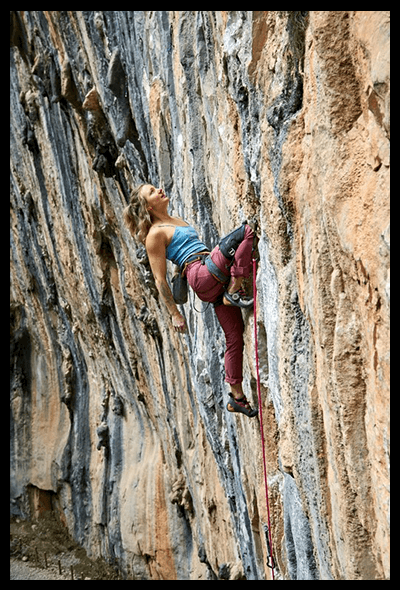By Trango Athlete Karly Rager
|
Streaks of orange and gray rip down the wall - sculpting tufas like gargoyles over the canyon. Wind passes like secrets from tree to tree; suspending my attention skyward. I feel I am not alone. Las Animas (The Spirits), the namesake of the crag, are here too. This place holds everyone that has been here before me. I can feel it. It feels like it holds everyone that is to come after me too. And, while I may occupy this space for a sliver of time, I am just a blink of an eye to Las Animas. My time here will fold over like the waves of tufas around me, absorbing more than what can be held in a single moment. At most, I am a nameless thread in the loom of Las Animas. Most of the routes are named in the Las Animas theme (Muchos Conjuros/Many Spells, Ojo de la Mente/Mind’s Eye, Purgatorio/Purgatory to name a few). The theme and feeling sweeps across the wall - all the way to Infierno del Dante. Infierno del Dante (5.13c/8a+) is towering. And it’s a classic. It is notoriously run out and scribes over 100ft of incredible climbing through rolled tufas, biting crimps, and near-frictionless slopers at the chains. The sustained nature of the route is punctuated by a compression boulder at the start, a precision deadpoint in the middle, and an almost-comp-style boulder on flowstone at the chains. |
|
|
 Photo by James Lucas |
You need power as much as you need endurance. You need to move quickly in some parts and slowly in others. And I am pretty sure you need the permission of Las Animas to send.
I was first drawn to this route because of how run out it is. I wanted the mental challenge of that. I wanted to dance with the spirits up there while being 20 ft. run out. But, as I got closer and closer to the redpoint, the relationship between my climbing and the redpoint felt asymptotic. I was good at getting closer and closer, but there was still something out of reach about it. A secret still held by Las Animas, and not yet understood by me.
Working to understand this was the most challenging part of weaving together the send… and this thread ended up having a very personal shade to its hue. In the end, it wasn’t so much about the falling or the sending, but the sticky mentality of somehow feeling like I needed it… and figuring out how to disengage with that. Las Animas seems to always carry a lesson for those who climb there, me included.
I tried this route for the first time in February 2023. Pulling all of the moves relatively quickly, but severely powering down in my larger pulling muscles and body tension after the second crux.
|
Photo by Galina Parfenov |
Often when climbers talk about training for a long route, we talk about pump in our forearms. But as a trainer, athlete, and coach, I know through my personal experience and through coaching others, that folks also experience being “powered-down”. Meaning, we might not be severely pumped in our forearms. But rather, we are unable to powerfully pull anymore and need to spend more time developing our bigger muscle groups. This was the case for me as well. I needed to make each individual move on the route feel easier (further from my maximum effort) such that the combination of the moves was more achievable. |
So, I embarked on the monotonous part of training. Repetitive strength sessions with the barbell (benching, rowing, pulling, and deadlifting) over the course of a year. I put in over 120 strength sessions. Marking the slow, albeit consistent progress, so that the next time I pulled into the Infierno del Dante, I could keep pulling at the rate that I needed to send.
Another unique part of this route was the pace of it. After I passed the mid-route deadpoint, I still had to climb 30 ft. of sustained 5.12+ to a block (the final rest). If I climbed it quickly, it flowed so beautifully. But if I climbed it slowly, it would kick me right off. It seems silly to say a rock is “meant” to … anything. But this portion of the route is meant to be climbed quickly if you mean to send it.
So, I started to think of the mid-route deadpoint as the “starting gun” rather than a crux. It was kicking off a pace change that I needed to maintain until the final rest.
 |
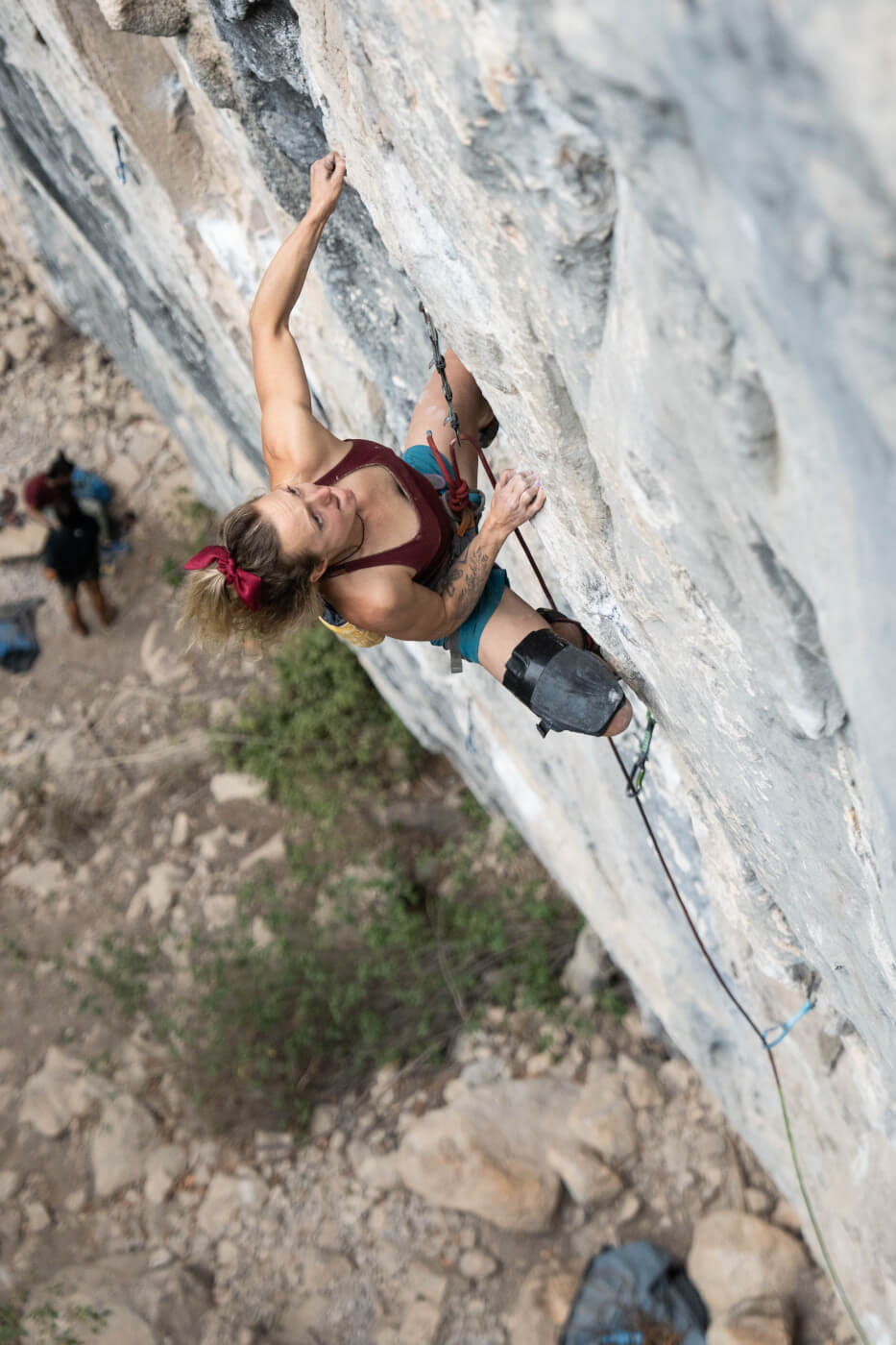 |
|
| Setting up for the mid-route deadpoint Photos by James Lucas |
||
Climbing a 30 ft. section of 5.12+ is one thing, but climbing it as fast as possible after two v6/v7 cruxes and 60 ft. of earlier climbing, is quite another. But here, the skill of climbing quickly was required. Climbing quickly doesn’t mean you don’t stop at rests - rather, it means you climb as quickly as possible between rests. And for a very sustained route with 2 real rests, it means you climb quickly pretty much the entire time.
And, while strength and pacing got me closer and closer to the send, the mental side of a project - the pressure I put on myself to send - was still limiting me.
Over the years, I’ve realized sending a hard route is like balancing a coin on its edge. On one side, my desire to send motivated me to train, work hard on other hard routes, build experience, and try my absolute hardest for moves that I had fallen on many, many times before. All of that desire and fire - all of that side of the coin - is 100% required to get yourself in a position to send.
However, like a coin, there is another side to that experience. That same willpower needed to get me in position to send, barred me from climbing very well on redpoint burns. My movement was tense and robotic. I found myself too keyed up to climb as well as I could if I were more calm. Essentially, I cared too much. I climbed like I needed it.
But if you need it, you can’t have it.
Finding the balance between these two sides of the very same coin, is the real crux of projecting. You have to be able to balance that coin. You have to care enough to prepare and try hard but not care so much that you can’t flow. You’ve got to balance the coin on its edge for enough time to climb without knocking the coin on its face.
If you need it, you can’t have it.
Truthfully, this was a lesson I had to learn before. Sometimes, that happens - we need to learn something again and again until we really know it. We need to be humble enough to rediscover it - to pull it up from the depths and take a look at what we’ve got going on down there.
|
Subconsciously, I really felt like I needed to send Infierno del Dante. But why? To release the need for a send on this route, I had to understand how this route and I got so tangled up down there and cut myself loose. And it took letting go many, many times. The first time I tried to release it, I sensed my ego being sneaky. “Ok, I let it go... Can I have it now?!” Nope, nice try... but that wasn’t it and you know it. Have to go back in. “Ok, I feel like I need it because I have worked hard and I want to complete what I’ve started. I will feel like a failure if I don’t complete it. I have need-to-prove-myself tendencies and this is a manifestation of that...again.” |
 Photo by James Lucas |
Gulp. There it is. This was the same lesson I needed to learn to send my first 5.13a in 2019 and there it was… again. Finding the source of this fallacy and detangling it was the most important thing I needed to send this route. It probably took me 2 days of reflection to get there.
I was actually, truly, deeply ok with not sending it.
The next day, I went out and decided to climb a different route first - just to build some confidence. I warmed up and sent Pasadilla, a 5.12c to the right of Dante’s. That felt good. I thought to myself I could be satisfied with that for the day.
I pulled onto Dante’s caring a lot less than previous goes. Laughably, I don’t think I cared at all and I gave a bit too much weight to the side of the coin that didn’t need it. My foot slipped around bolt 7. The coin fell on its tail.
“Welp,” I thought, “I’ll just go back up, tighten the core tension at that one spot, and see what happens.”
And, finally, I balanced the coin.
I flowed, completely without thoughts, until I was looking up at the final moves that hemmed the chains. I switched in and out of the kneebar rest, letting my pump cease and letting my thoughts come back into my head.
 Kneebar at the final rest Photo by James Lucas |
Many people fall up there on redpoint burns. It is such a test of your movement and balance skills. There is no way to just “power through it” - I needed to really understand my hip trajectory and weight transitions to use those directional, sloped foot holds. I knew this redpoint was very, very much not in the bag. As I looked up at those moves, I reminded myself that I did not need this climb.
Rather, I thought through the moves and how they felt in my body and how I could enjoy them best. How I could climb confidently, decisively, and in a way I would be proud of - send or no send. Pulling out of the rest, I excluded my thoughts again and only experienced the rock in my hands and the pressure in my feet.
If you need it, you can’t have it.
I didn’t need it anymore, so Las Animas let me pass. I sent Infierno del Dante that morning.
Going forward, I hope I hold this lesson a little closer to the surface. If I don’t, I know I’ll have to dig it up again to balance the coin on its edge.
Throughout any projecting process, the climber is only one of the many people involved to make it all come to life. The same was true for this one.
The locals and community of El Salto that keep it magical are so special to me. It’s their spirits that keep the feeling of El Salto what it is. You can learn more about the history of El Salto from the locals and the classic climbs in the area in past blog posts - El Alma del Salto - Part I and Part II.
This year, I was happy to help replace some anchors on some older climbs. Joel (local climber & engineer) and I replaced old quicklinks with new, rated anchors supplied by the American State Climbing Association on the first pitch of Unga Bunga (5.11+).
 |
 |
|
|
Anchor replacement for Unga Bunga, Las Animas. New anchor material provided by American State Climbing Association. |
||
Spending one day during each trip to help the sustainability of the crags in El Salto is something I always try to do. While it’s a small amount of time, if everyone that visited Las Animas did the same, it would be substantial.
|
My coach and climbing partner, Gal Parfenov, was also a huge contributor to this project. I couldn’t have done it without her. She coached me through several months of strength training and worked with me on the tactics and strategy for the route from Day 1. Catching so many 45 ft. whippers and the first one to give me hugs when I sent. But really, being with me every step of the way - a true friend & mentor in a way that is so special to our sport.
I am also grateful for the support from Trango/Tenaya. I have been wearing the Tenaya Iatis and whipping on Trango ropes for the last 8 years (long before I joined the athlete team). The Iatis are my go to shoe for about 90% of what I climb. Infierno del Dante was no different. I wore them for each burn - finding the precision of the shoes to be the best I have ever felt while fitting my foot so well that I’ve never had to spend time breaking a pair in. |
 |
|
|
Photo by James Lucas |
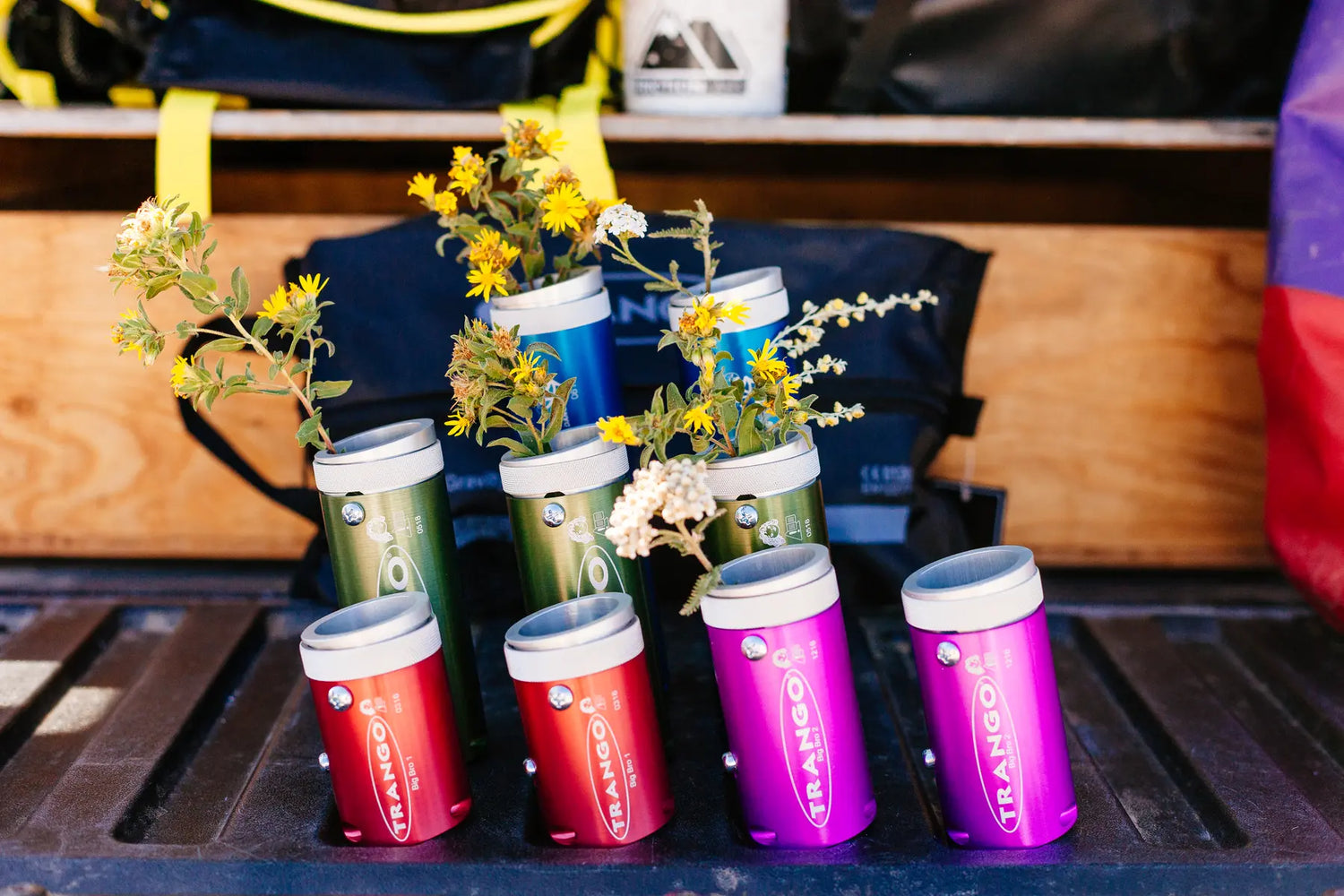

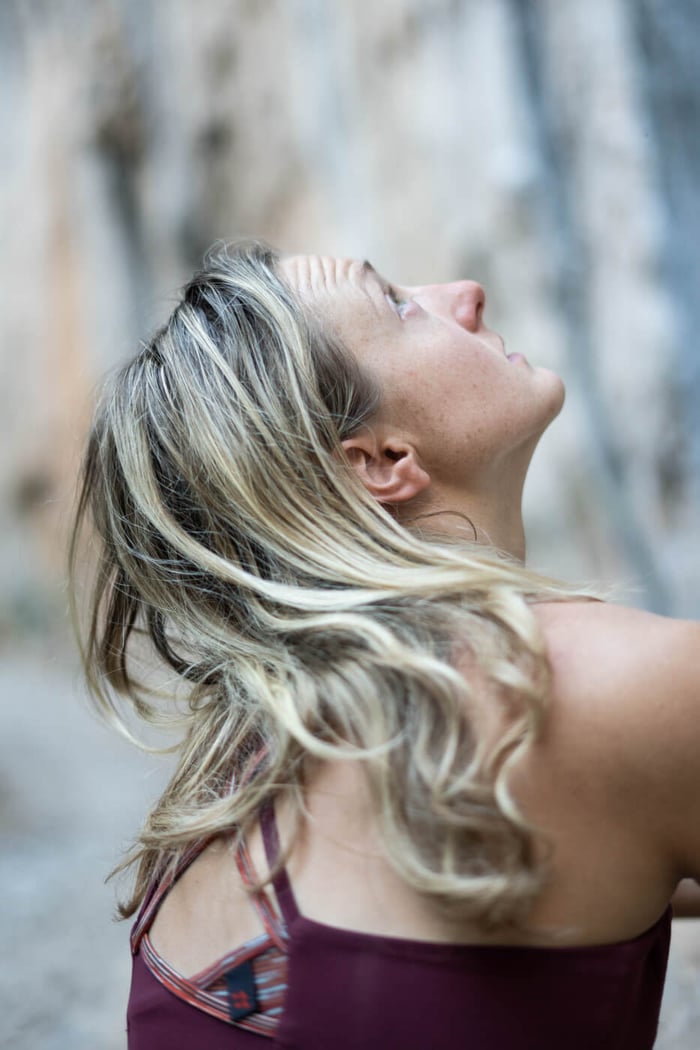
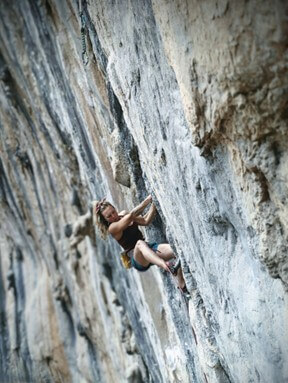 Photo by Galina Parfenov
Photo by Galina Parfenov

